INTERVIEW WITH
STEVE CUTTS
“My main aim is to get people talking about the issues we face as a society. Of course some pieces have a more overt message but the work is created largely to make us think more about the way we live.”
Steve Cutts is a British illustrator, animator, and director known for his satirical and darkly comedic take on contemporary society. His work often features anthropomorphic characters in bleak urban environments, exposing the darker side of human nature and the impact of technology on our lives. Cutts began his career as a freelance illustrator and has since worked for major brands and publications, as well as creating his own short films and animations.
One of Cutts' most notable works is his animated short "Man," which went viral in 2015 and has since been viewed millions of times online. The film, which depicts a rat-like man's descent into consumerism and technology addiction, received critical acclaim for its thought-provoking commentary on modern society. Cutts continues to produce work that pushes the boundaries of animation and illustration, and his unique vision has made him one of the most respected and sought-after talents in the industry.
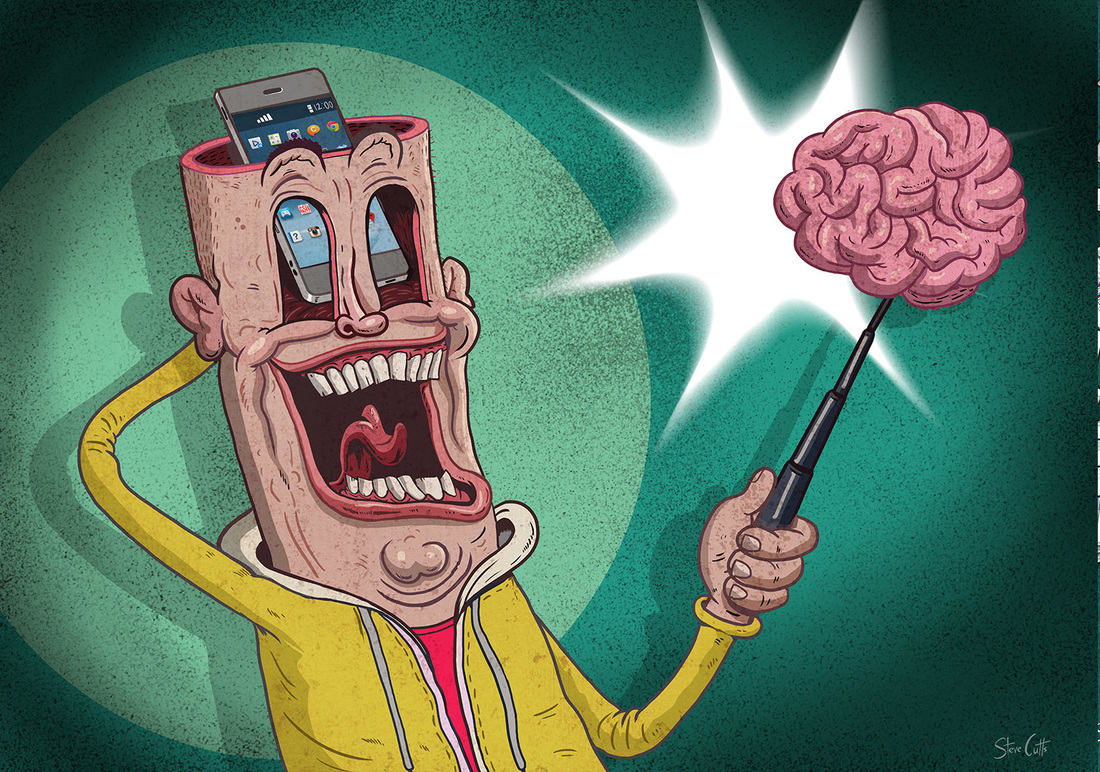
Please briefly tell us about you.
I'm a UK based illustrator and film maker. My work largely focuses on the many issues we face as a society, hopefully engaging people through humour and raising some awareness at the same time
What originally made you want to become an artist?
I've been drawing and making art as far back as I can remember, so it wasn't really a conscious decision in that respect. As a kid I was always sketching and painting and that focus on art continued - there was never really any question regarding what occupation I'd go into. Of course my style and goals as an artist changed throughout the years - I originally studied sculpture at college, then went back to painting before later joining the digital world as an illustrator and animator so it's been a journey to find my niche.
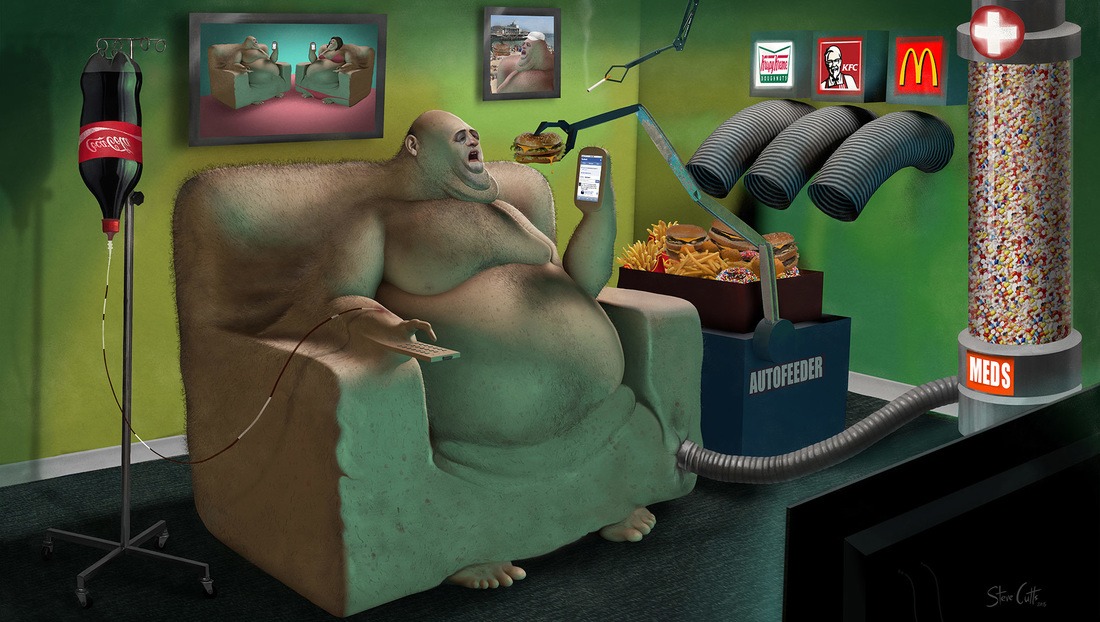
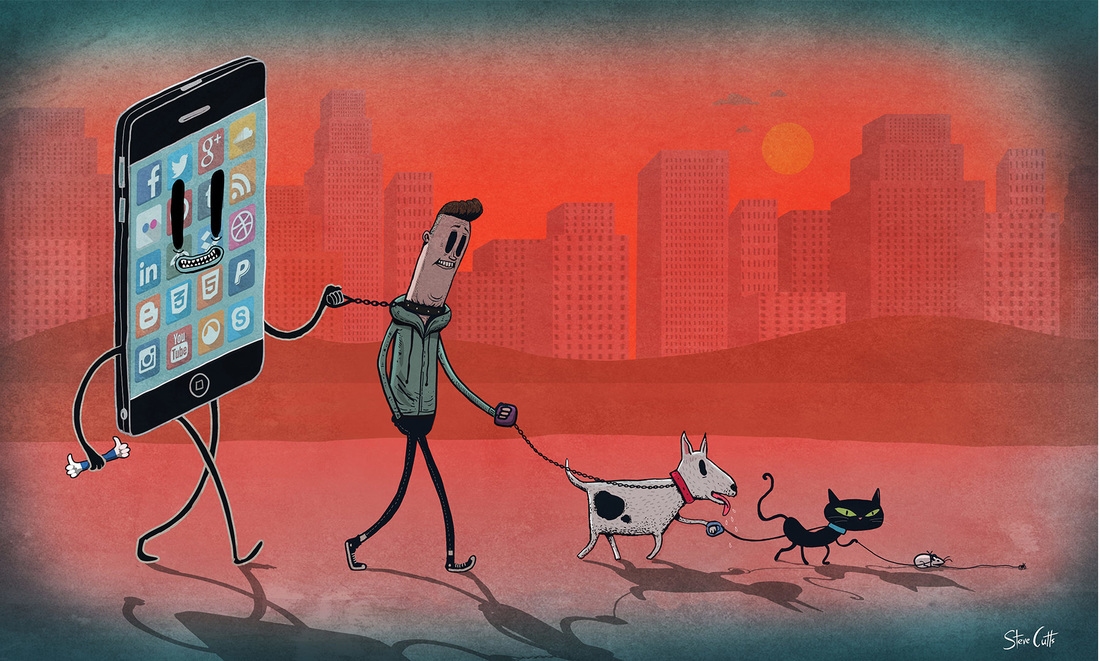
What are your artistic influences?
My artistic influences are pretty diverse I guess, from cartoonists such as Robert Crumb to painters like Francis Bacon, Lucian Freud and filmmakers such as the Coen Brothers, Stanley Kubrick, Ridley Scott, etc. But mostly my influences come from the world around us.
Your illustrations offer a critical perspective on contemporary society. They deal with topics such as corruption, consumerism, the environment and social media, just to name a few. What message do you want to convey? What is unique about approaching these issues from an artistic perspective?
My main aim is to get people talking about the issues we face as a society. Of course, some pieces have a more overt message but the work is created largely to make us think more about the way we live. The aim of the work is not to encourage people to stop buying consumer goods or to stop using mobile phones, but to consider our dependence and need for these things. I think that's partly what draws me to art as a medium, it has the power to convey difficult messages in an engaging way through humour and subversion.
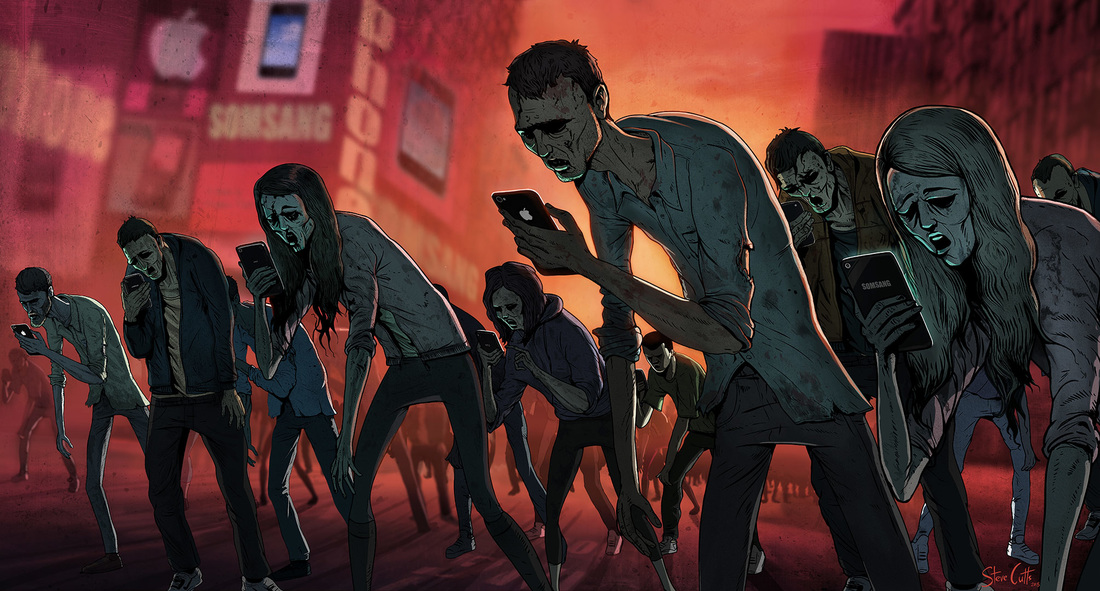
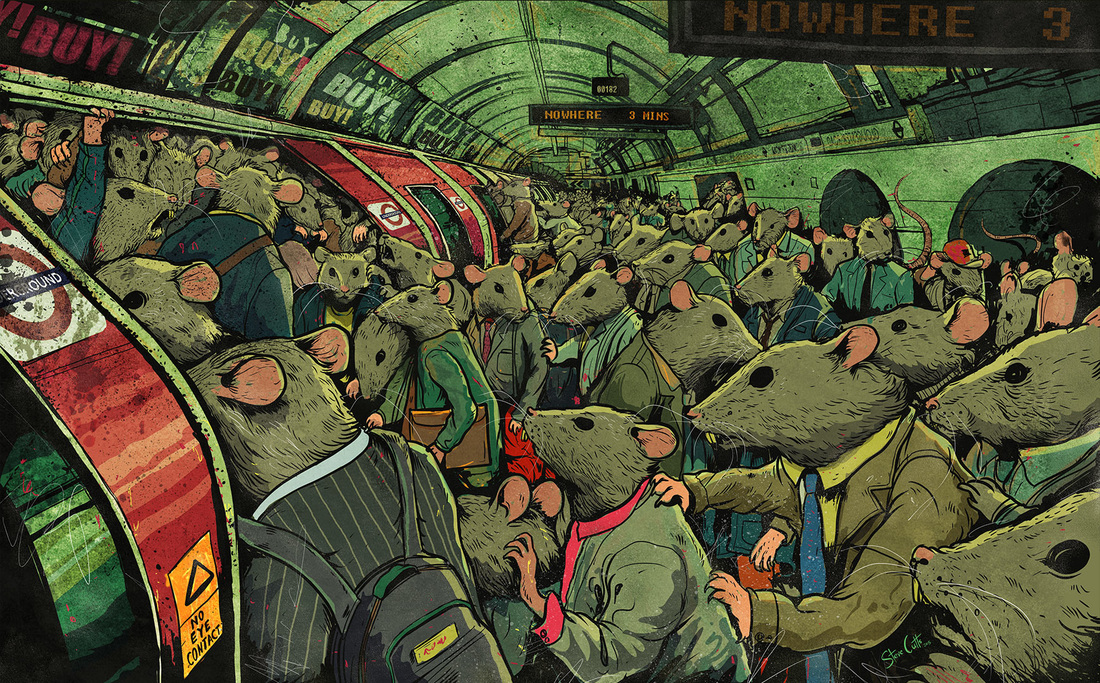
Your work exhibits a broad range of styles, going from cartoon-like to realistic 3d images. How has your style evolved over time? How do you determine the aesthetics that is more suitable for a given piece?
For a short time early in my career, it was my aim to settle on a single definitive style as at that time I thought having a broad range of styles would weaken my portfolio. But as time wore on I realized I preferred experimenting and the idea of sticking to just one style seeming extremely limiting. Of course, line drawn cartoon work is the main thread within my illustration work but if I want to branch into more 3D realistic styles I'm happy to go with it. It's an aesthetic choice too, illustrations such as 'Evolution' and Jessica & Roger at home' would probably not work quite as well in the line drawn style necessarily as there's a lot more detail and atmosphere there that can get lost within the simpler line drawn styles. In addition, my animation is different in that most things really have to be line drawn in order to animate them unless it's a cut out / puppet style animation, so obviously there's less choice than with static illustration work. In terms of having a broad range of styles, far from detracting from my work, I think it has actually enhanced my portfolio. If I could go and talk to me 10 years ago I'd tell myself to stop looking for a single style and to go with my instinct and keep developing and experimenting.
What do you think about technology as a creative tool and how do you incorporate it in your work?
Technology is certainly a valuable creative tool to me and without it, my work would, of course, be very different. I create my work on a PC build using a Wacom Cintiq graphics tablet which allows me the freedom to constantly change and evolve my images and films without the labour that would be involved in more traditional methods of creating work. Ultimately tech is what makes film making and animation possible for many artists out there, including myself - it allows the creation of films that would only have been possible a few decades ago by hiring an entire studio of people and equipment - something that would be impossible for most people without a huge budget a few decades back. Of course, the irony is not lost on me that my work is created with the help of technology, whilst also critiquing aspects of technology. However that criticism is aimed at our dependence on tech and it's unethical production methods, as well as the distance creates between us. It isn't just a criticism of tech itself, which certainly is not without it's benefits. My work focuses on technology eclipsing our human interactions and development.
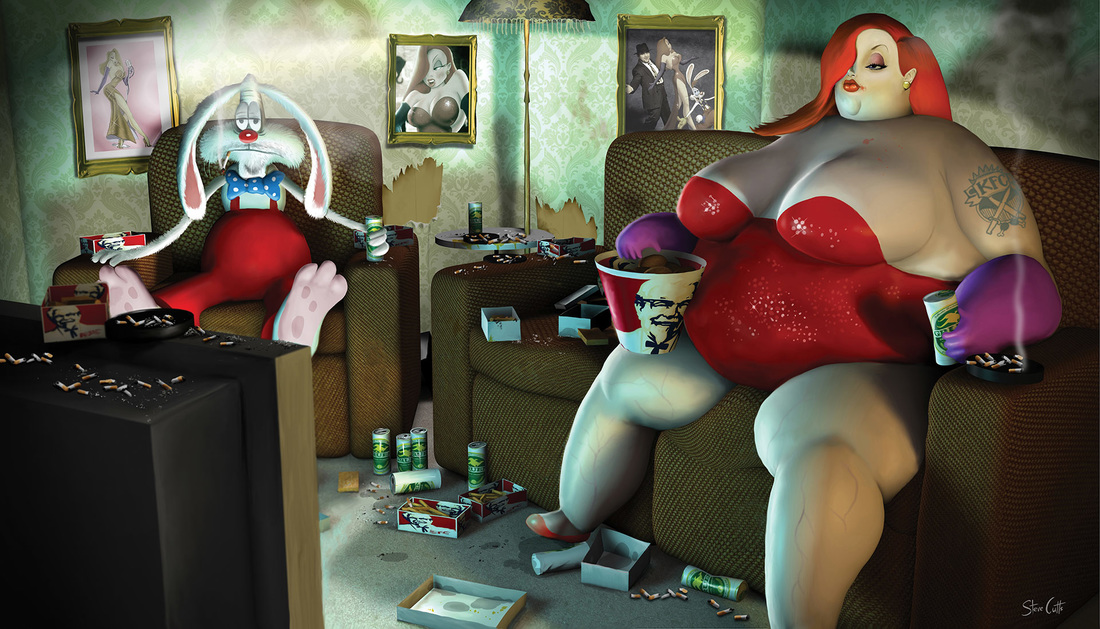
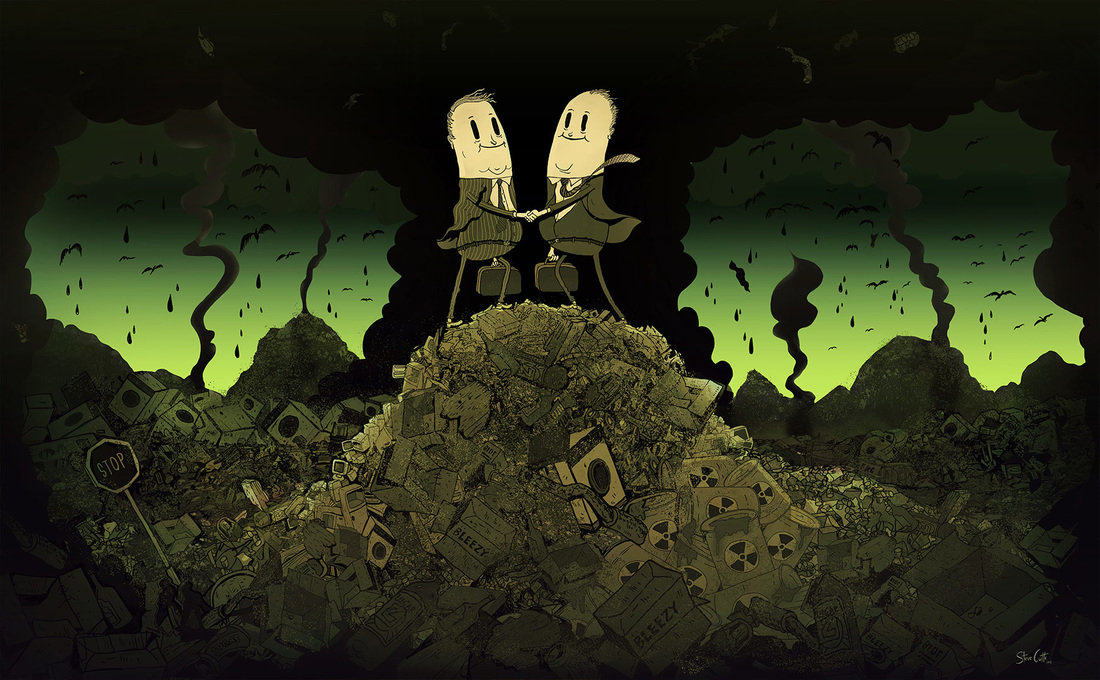
You are a truly multifaceted artist. Your animations are also fascinating. Can you briefly describe the process from conceiving the storyline to producing one of these works? How long does it take?
On average a single film can take anywhere between 3 to 7 months depending what's involved. Although it's hard to keep track of many of my personal films as these are completed between paid work during downtime. I don't really have a tried and tested method for developing a film, many start in different ways. Some begin with just a simple observation which then becomes the core of the film. With 'Man' it was simply the main ways humankind interacts with other species and the environment. From there I developed the cartoon style and thought about each moment, whats the most humorous and engaging way to get each point across. It's while developing these scenes that the emotional core of the film develops, and from there it becomes multi layered. Usually, when working on a project I will be thinking about it constantly, so things happening around me day to day trigger new ideas and directions. I never simply rely upon the concept or storyboard I have at the start and nothing is set in stone. If I develop something halfway through a project which takes the film in a better direction then I'm happy to go with it. These days I actually prefer to have just a very loose set of drawings of key scenes as the storyboard and actually go straight to creating the animatic or moving storyboard, including placeholder music. What looks good on paper sometimes doesn't work how you imagined in reality, so the animatic gives me a much better sense of the film I will be creating.
The documentary style short featuring Roger and Jessica Rabbit 25 years after their spotlight, together with several other popular characters, is extremely original. How did you come up with the concept?
The concept for 'Where Are They Now?' originally started life as an illustration I did a few years back of Jessica and Roger sat at home, past their prime. Traditionally cartoons never age or really change in any significant way... they aren't subject to the same everyday grind most of us are in reality, so I wanted to explore that. To take extraordinary characters and put them in mundane everyday situations, subject to the same laws of aging and general change that we experience as humans. There was a lot of scope there, not just in terms of humour but also in terms of emotional resonance. One of the challenges was creating the back stories for all the characters since we'd seen them 25 odd years ago. Many people change massively in 25 years, looks, occupations, attitudes etc, so really anything goes. But there was a logic to it - it made sense to me that Jessica and Rogers marriage had run out of steam, it always seemed unlikely to me that a marriage between woman and rabbit would ever work out in the long term.
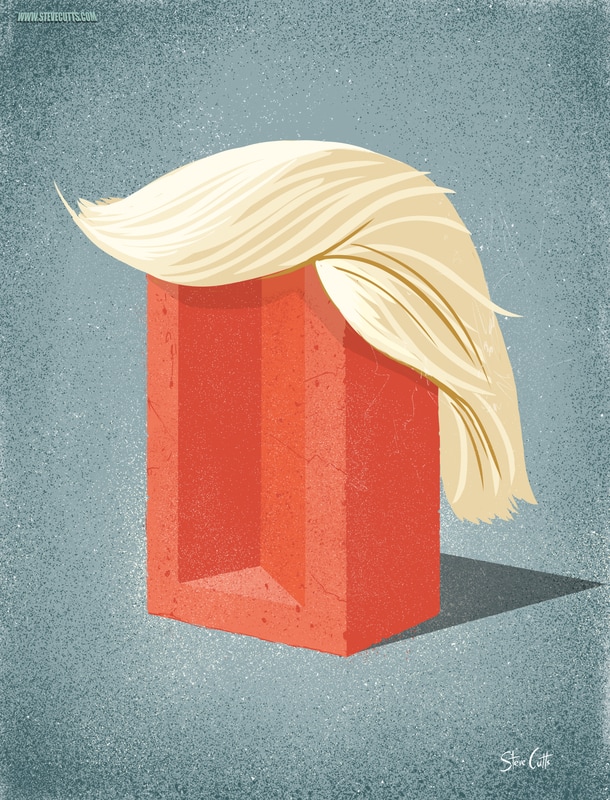
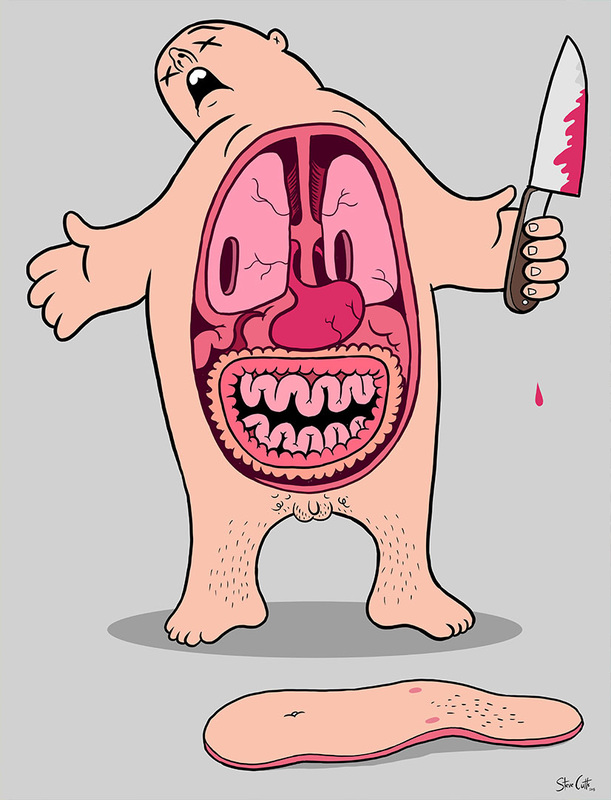
You contributed to the The Simpsons, one of the most iconic shows in popular culture, by creating a couch gag inspired in Miami Vice. Can you share with us a little about the experience of being part of such an influential show?
It took me by surprise when I got the email... my first thought was that it might be a prank! Then I realized it was real and canceled everything else in my diary... It was one of the most fun projects to work on to date - it's not everyday as an animator you are given a blank canvas to work on. Creating a couch gag is usually a once in a lifetime thing, so to say there was some pressure to make it good would be an understatement! Essentially the brief was I could do just about anything I wanted as long as it wasn't completely obscene. From there I was put in touch with show runner Al Jean and I pitched a few concepts, among them the idea for the Miami Vice couch gag. I sent over some character concepts of Homer as a Don Johnson style Miami detective and Ned Flanders as a crime boss, and it had to be Ned as it worked so well. Luckily they approved and I story boarded it from there. Everyone was really great and very easy to work with which is part of what made it such a fun experience. It was a very surreal feeling to be involved in one of the shows I loved so much while growing up so it was great but also strange to think I somehow got to be a small part of that universe.
You mention you are always looking for new projects and collaborations. What are the challenges, advantages and rewards of collaborative work?
On personal projects, I'm very much a one man team, but obviously with collaborative work you get someone else's take on things, so that can sometimes steer you in directions you wouldn't ordinarily have strayed to, so it's always interesting where you end up conceptually. Others can also bring new skills to the table, which enriches the quality of the final film. One of the challenges is compromise. Obviously, if a few people are pulling in different directions compromise has to be made, which sometimes may or may not work as well as a single distinct vision. It calls for creative thinking to come up with a solution everyone is happy with, which in turn can take things in new, unexpected directions.
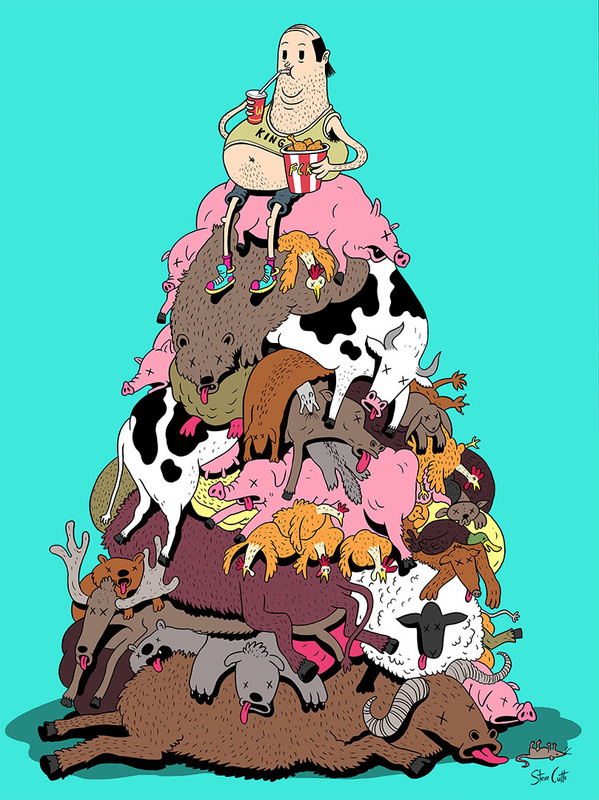
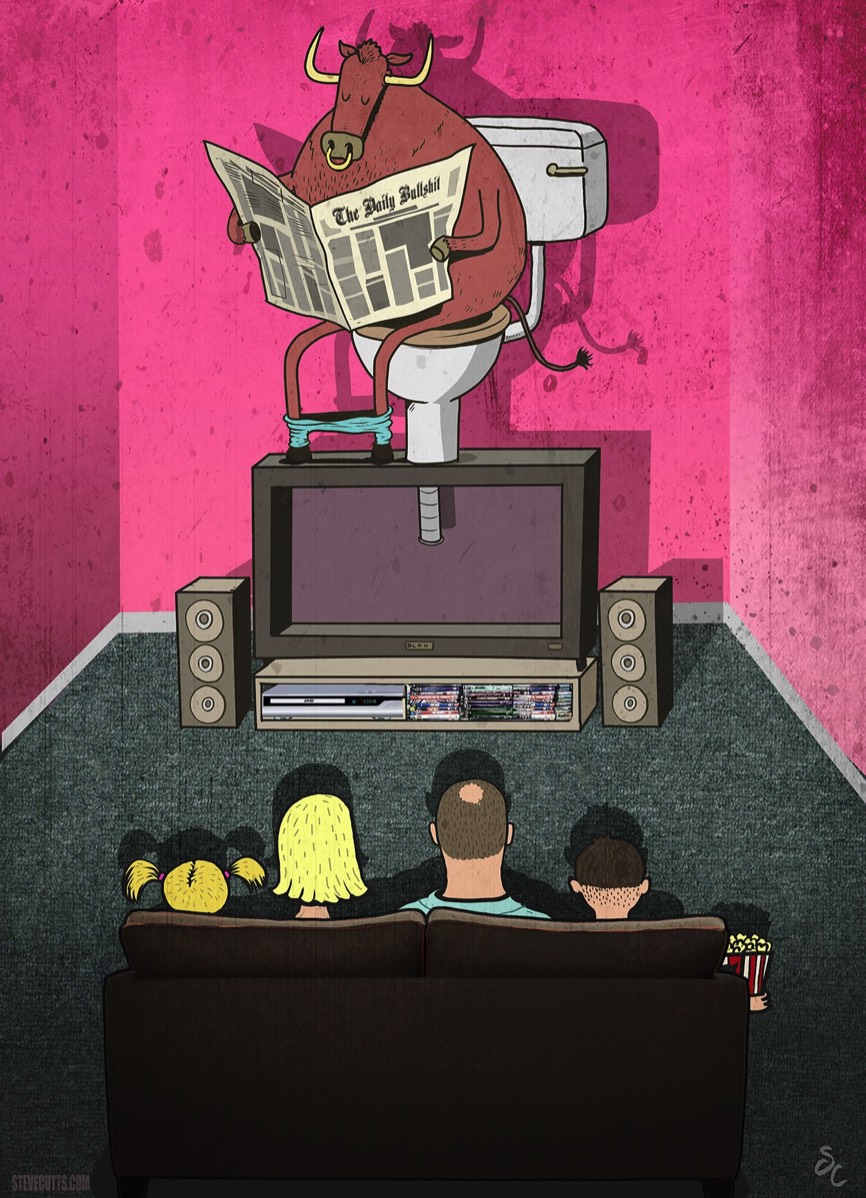
What is your advice for those taking the first steps in the artistic world?
Really just to keep at it and to persevere. In my own experience, it was my personal films that my success was built upon, so my advice would be to not downplay the role your personal work has in your portfolio. Also to grow a thick skin and to not take criticism and negative comments personally - learning to deal with this is probably one of the biggest hurdles as an artist. Oh and never do anything for free because they say 'It will be great for your portfolio'.... It's a trap!!
What is in the future for Steve Cutts?
I only wish I knew! I have a few more shorts I want to get out there... Then maybe a series of some sort could be on the cards. Time will tell!
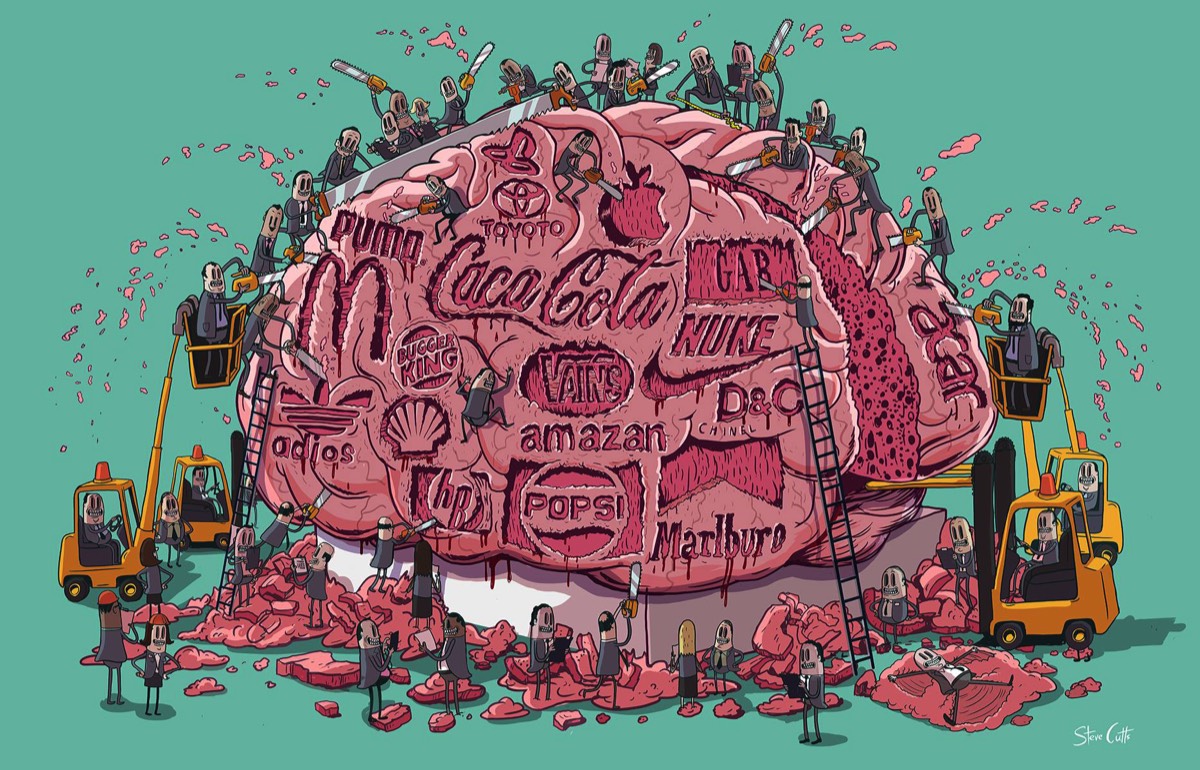
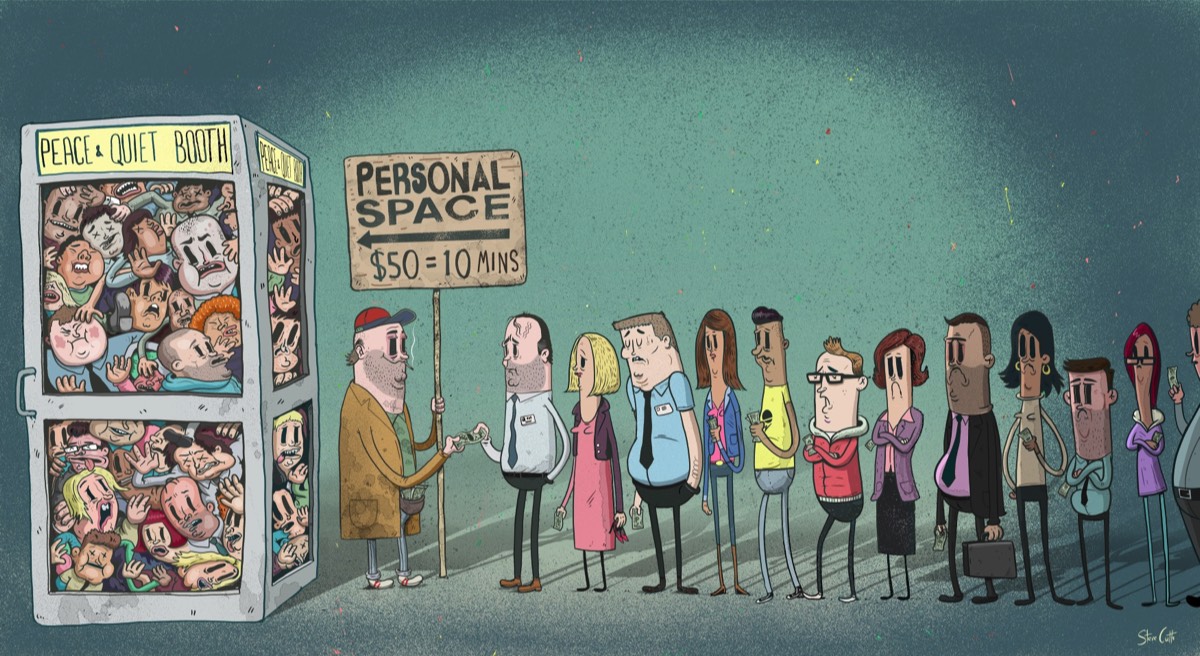
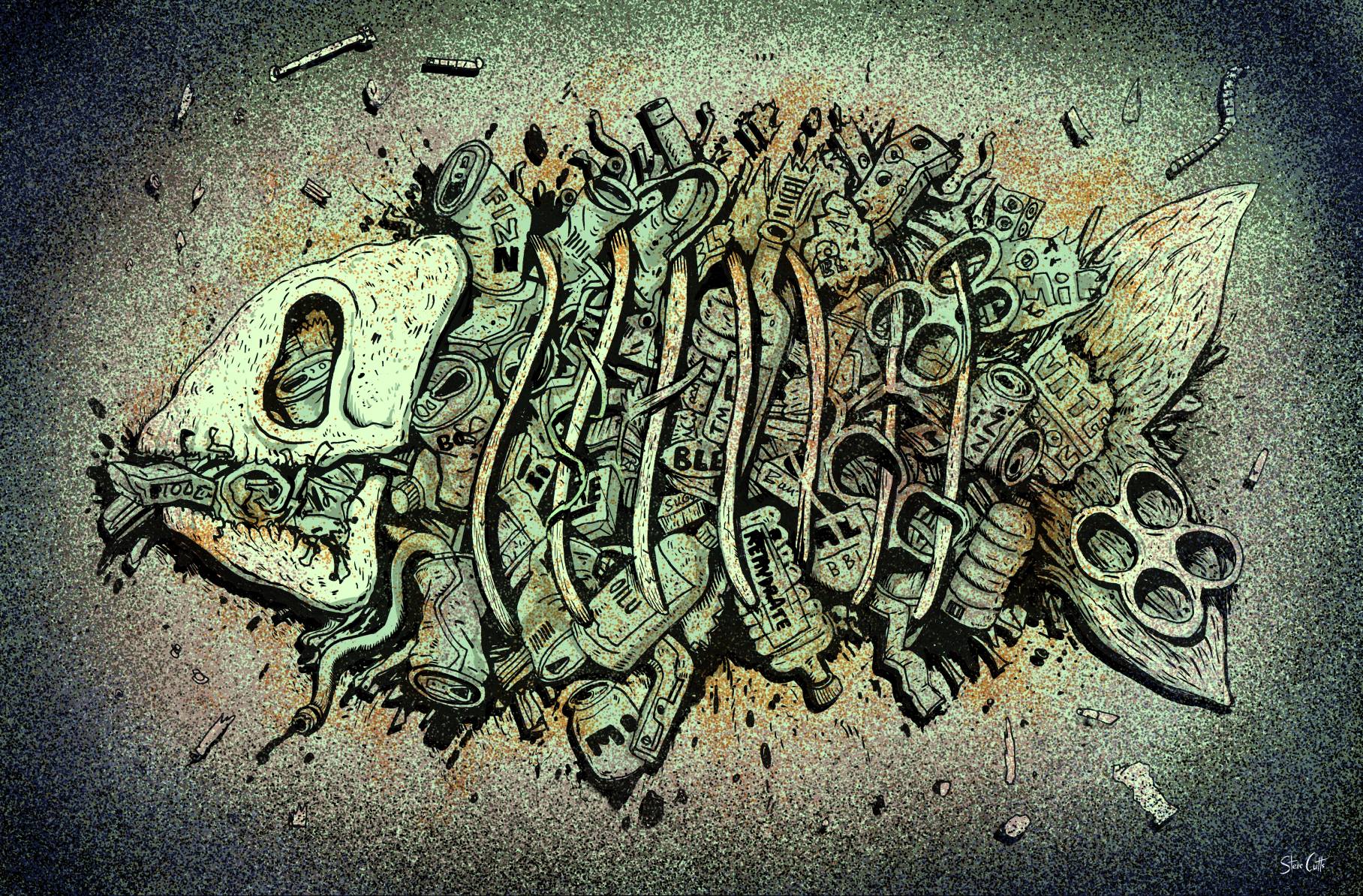
Steve Cutts| Website

